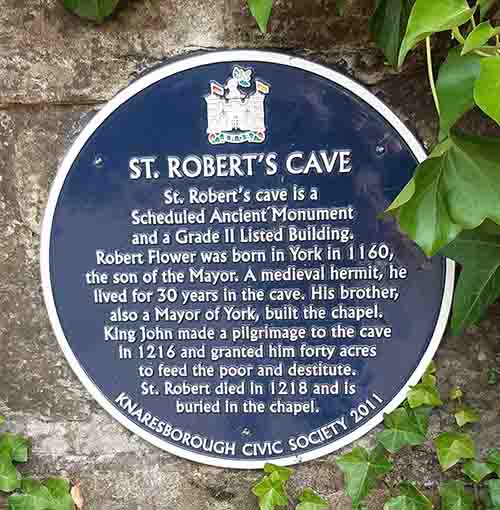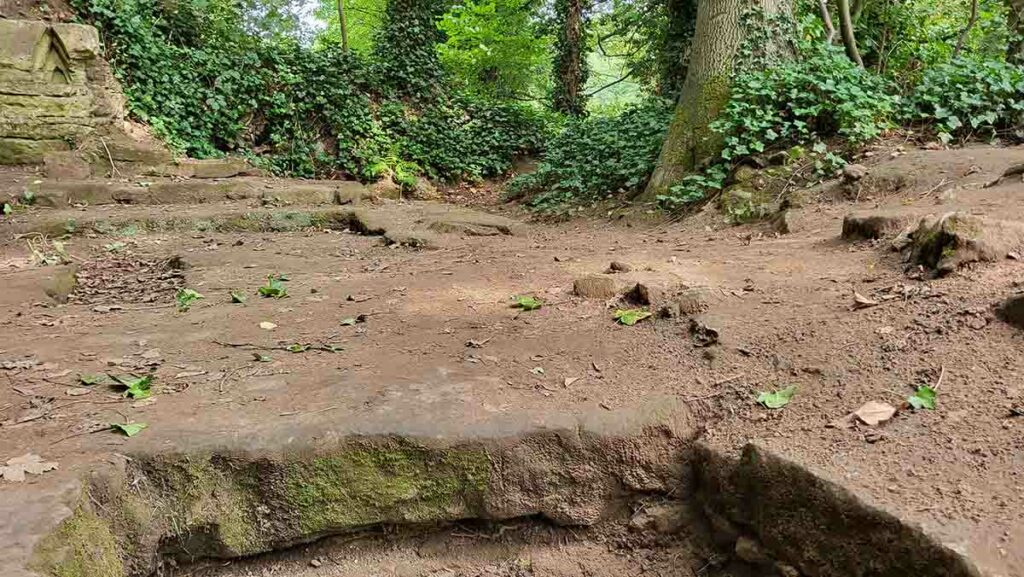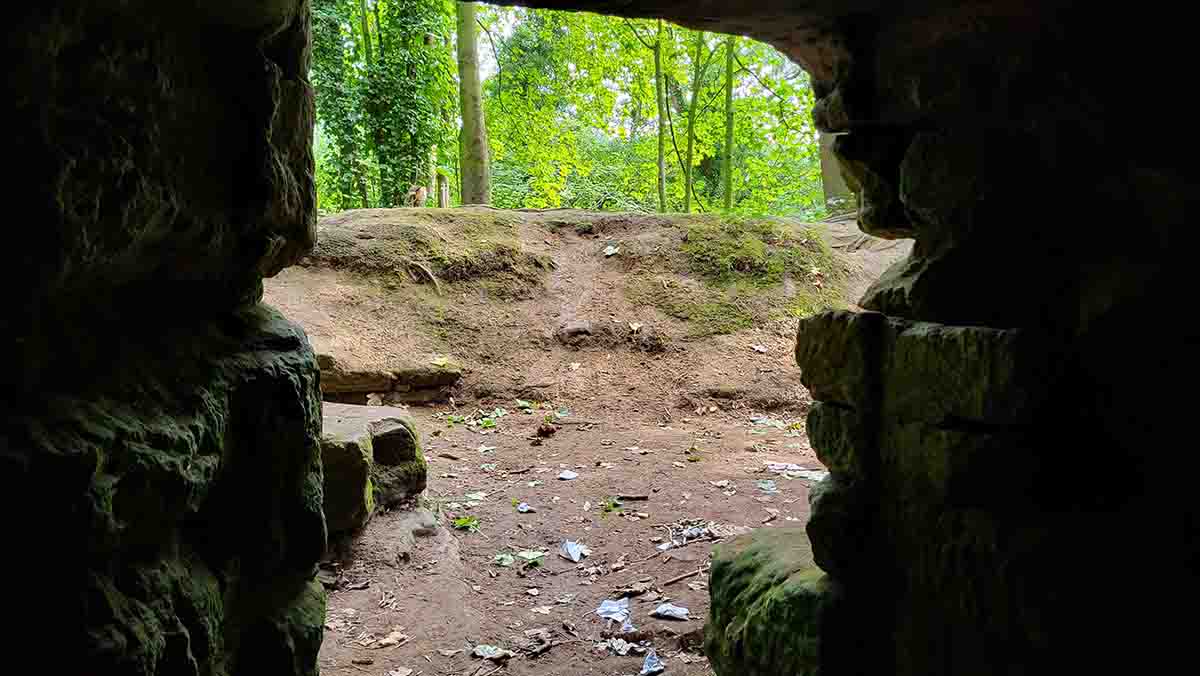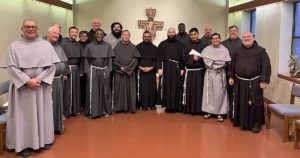In part 1, we visited the ruins of Knaresborough Castle and walked along the River Nidd.
In part 2, we visited a mediaeval Marian Shrine.
In part 3, friar Solanus Mary takes us to St. Robert’s Cave.
St. Robert’s Cave
There is another place of interest for the pilgrim to Knaresborough, and it is located just a short walk further along Abbey Road. The place is known locally as St. Robert’s Cave. It lies in a secluded area, close to the river.
I must admit that I do not know much about this place, other than what is given on the plaques outside it:
“St. Robert of Knaresborough lived here from c. 1190 until his death in 1218. He established a small community who supported the physical and spiritual needs of the pilgrims who visited him. The most famous of these was King John, who travelled here in 1216. After his death, Robert became one of the best known saints in Europe, in an era which saw the veneration of many saints. St. Robert’s cave became the focus for pilgrims from across Europe and the Trintarian Priory was established in Knaresborough. The local citizens believed that St. Robert always kept a special place in his prayers for the people of Knaresborough.”
A second plaque tells us that the cave itself is cut into the face of the limestone cliff, and originally served as a chapel. Inside the cave is a small shelf cut out of the stone, which may have served as an altar. Robert is said to have enlarged the cave himself. The structure itself is not too dissimilar from the Marian Shrine nearby.
Outside the cave, Robert’s brother, William, built a stone chapel, Holy Cross Chapel. As can be seen from the photograph, some remains of this chapel are still visible to-day: the wall foundations, the base of the altar platform, and the grave in which Robert was originally buried (his body was moved to the Priory sometime after 1250).
Isn’t it sad to think that such a holy and revered man such as St. Robert has come to be almost completely forgotten to-day?

Trinitarian Order
In passing, we should say a little about the Trintarian Order. This Order came to Knaresborough in the years following Robert’s death, and established a priory there. No doubt this is the origin of the name of Abbey Road. The Order did much in the way of charitable works, but is probably best known for raising money for ransoms to free Crusaders held captive in the Holy Land.
Many pilgrims came to Knaresborough in those days to visit the shrine of St. Robert (whose remains had, as we have noted, been translated to the Priory). The monks offered hospitality and spiritual assistance to these pilgrims. All this flourished until King Henry VIII and his Dissolution of the Monasteries. Thereafter the usual destruction followed, and the monastery was reduced to rubble; sadly, nothing remains of it to-day.
Like the Marian Shrine nearby, there is a peaceful, prayerful atmosphere about St. Robert’s Cave.

The Shrines in Literature
The 19th century English poet, William Wordsworth, visited the Our Lady of the Crag shrine and wrote about it. However, it seems that he mistook it for St. Robert’s Cave nearby. Sometime later Wordsworth wrote:
“The Effigies of a valiant Wight
I once beheld, a Templar Knight;
Not prostrate, not like those that rest
On tombs, with palms together prest,
But sculptured out of living stone,
And standing upright and alone,
Both hands with rival energy
Employed in setting his sword free
From its dull sheath-stern sentinel
Intent to guard St. Robert’s cell;
As if with memory of the affray
Far distant, when, as legends say,
The monks of Fountain’s thronged to force
From its dear home the hermit’s corse,
That in their keeping it might lie,
To crown their abbey’s sanctity.
So had they rushed into the grot
Of sense despised, a world forgot,
And torn him from his loved retreat,
Where altar-stone and rock-hewn seat
Still hint that quiet best is found,
Even by the ‘Living’, underground;
But a bold Knight, the selfish aim
Defeating, put the monks to shame,
There where you see his Image stand
Bare to the sky, with threatening brand
Which lingering NID is proud to show
Reflected in the pool below.
Wordsworth makes a reference to the “monks of Fountains” – presumably a reference to the monks of Fountains Abbey, a ruined Cistercian monastery in the nearby town of Ripon. Is he confusing the Cistercian monks of Fountains with the Trinitarian monks of Knaresborough? As well as confusing the two shrines?! Well, I suppose that even the great and wonderful such as Wordsworth can make mistakes!
Epilogue
If you are in this part of England, these shrines are well worth a visit. And you can spend the rest of the day – or, better still, spend a few days – simply enjoying the beautiful town of Knaresborough.
– friar Solanus Mary OFM Conv.



